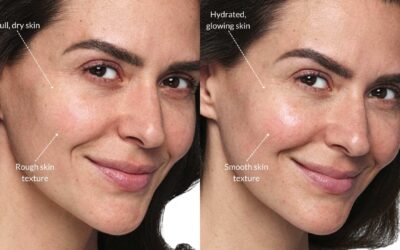We are celebrating the recent move by Instagram to ban plastic surgery filters such as Plastica and FixMe, which created exaggerated features, unrealistically smoothed out skin, and even bruising emulating cosmetic surgery.
Not only do these filters glorify cosmetic procedures and contribute to the normalization and commoditization of the ‘weird’ and overdone aesthetic, they also create unrealistic expectations for both surgeons and cosmetic physicians to contend with.

The ‘Fix Me’ filter.
Add to the mix the terrible before and after photos constantly on my social media feed that have different lighting, positioning, makeup and sometimes even different people(!), that all create (and perpetuate) unrealistic expectations. To us, the tricks are obvious, but to the layperson, it seems like dramatic transformations have been made when the reality is likely to be quite different. It makes me furious, as it leads the unsuspecting public astray.

The ‘Facetune’ filter.
In NZ, Medical Council Guidelines state that the photos should have consistent lighting, positioning and makeup, and should be your own photos – but we still see many clinics breaking these rules!
Social media is changing the landscape of the cosmetic industry. In 2017, the American Academy of Facial Plastic and Reconstructive Surgery found that 55 per cent of surgeons reported seeing patients who cited selfie-taking as a reason for seeking their services.
The industry is also reporting a much younger demographic than 5 years ago, with many (sometimes very young) patients seeking out distorted ‘Bratz Doll’ type features to look good in their selfies, while ignoring how out of place those features look IRL (In Real Life – it even has an acronym these days!). My other concern is that many of these young girls all start looking the same.
Compare this to when I started nearly 20 years ago, when people came in to soften lines and balance their features, and patients in their 30’s wondered if it was ‘too early’ (it isn’t – I believe starting in your late 20’s helps us ‘press pause on ageing’ more effectively – although we can do it at any age)
As good clinicians, I believe we have a public responsibility to create beautiful, balanced faces, that still look like you. Every person has their own style of beauty, and cosmetic procedures should help bring out your best features while softening those negative features that create a message from the face of looking sad, tired, angry, stressed or saggy.
I equate the ‘Bratz Doll’ look to the shoulder pad and big hair craze of the 80’s – something that these girls will look back on in 10 years and shudder. I already have friends of mine who have ignored my early advice and went to other clinicians for the ‘done’ look, who are now looking back 5 years later and saying ‘what was I thinking?’ Unlike clothing though, these are medical procedures with potential risks that could permanently affect the face if done incorrectly.
As an industry, we have been here before with the ‘overdone look’ in the 80’s and 90’s – and you only have to look at Jackie Stallone, Joan Rivers, Donatella Versace and Mickey Rourke, to see how that turned out!


Some of the less subtle ‘work’ done in the 90s.
We are joining other industry leaders globally in trying to educate people that cosmetic treatments don’t have to – and shouldn’t- look weird. At the recent Aesthetics 2019 conference we attended, Plastic Surgeon and Convener Steven Liew called it. He put a picture of over-treated lips up on the screen, and when the audience gasped and judged, he pointed out that at least half the audience of cosmetic injectors looked as bad or worse!
The responsibility lies with us, the clinicians, the injectors, the facial artists, to say ‘no’ to bad work. To say ‘no’ to weird. To say ‘no’ to unrealistic expectations created by social media filters.
It’s why, at The Face Place, our initial consultations are longer in duration than anyone in the industry. We want to get to know your face – and you. To discuss your expectations and what we can and can’t achieve. To educate on what is possible and what isn’t. To bring out the best version of you, without changing the essence of you. To say ‘no’ (and explain why) when you don’t need it. It’s so important for us to take this time to ensure we get the best, most natural-looking results for you the client.
So ‘thank you’ Instagram. We still have a long way to go to improve regulation so that we have qualified and experienced injectors with realistic before and after photos being showcased on social media, but it’s a start! Bravo, we celebrate you!
– Dr Cat





